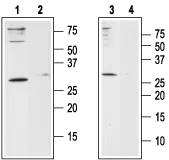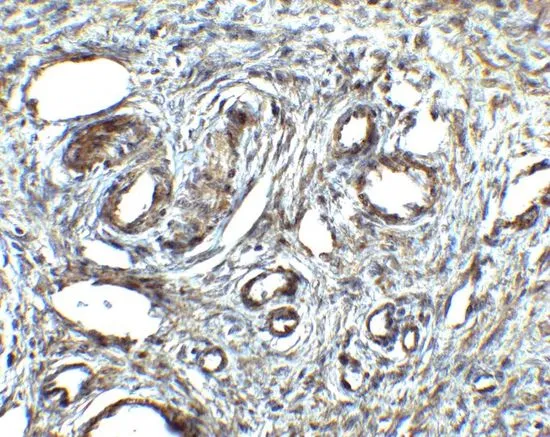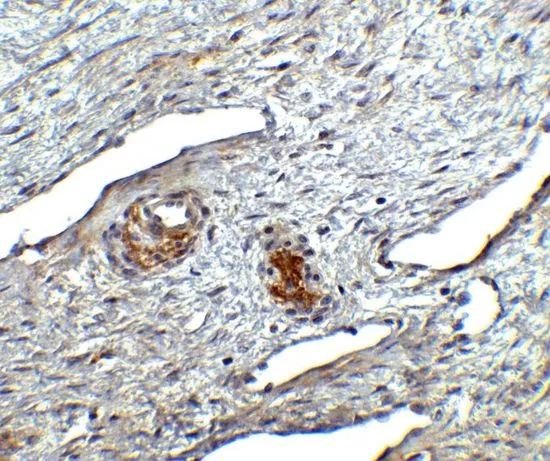
IHC-P analysis of human ovary tissue using GTX85057 Orai1 antibody. Working concentration : 2.5 microg/ml
Orai1 antibody
GTX85057
ApplicationsWestern Blot, ELISA, ImmunoHistoChemistry, ImmunoHistoChemistry Paraffin
Product group Antibodies
TargetORAI1
Overview
- SupplierGeneTex
- Product NameOrai1 antibody
- Delivery Days Customer9
- Application Supplier NoteWB: 1 microg/mL. IHC-P: 10 microg/mL. *Optimal dilutions/concentrations should be determined by the researcher.Not tested in other applications.
- ApplicationsWestern Blot, ELISA, ImmunoHistoChemistry, ImmunoHistoChemistry Paraffin
- CertificationResearch Use Only
- ClonalityPolyclonal
- Concentration1 mg/ml
- ConjugateUnconjugated
- Gene ID84876
- Target nameORAI1
- Target descriptionORAI calcium release-activated calcium modulator 1
- Target synonymsCRACM1, IMD9, ORAT1, TAM2, TMEM142A, calcium release-activated calcium channel protein 1, calcium release-activated calcium modulator 1, protein orai-1, transmembrane protein 142A
- HostRabbit
- IsotypeIgG
- Protein IDQ96D31
- Protein NameCalcium release-activated calcium channel protein 1
- Scientific DescriptionAntigen stimulation of immune cells triggers Ca++ entry through Ca++ release-activated Ca++ (CRAC) channels. ORAI1 is a recently identified four-transmembrane spanning protein that is an essential component of CRAC. A missense mutation in this protein in humans is the cause of one form of hereditary severe combined immune deficiency (SCID) which results in ablated T-cell Ca++ entry. It has been suggested that ORAI1 functions as a highly selective Ca++ plasma membrane channel that is gated through interactions with STIM1, the store-activated endoplasmic reticulum Ca++ sensor. ORAI1 often migrates at a higher than expected molecular weight in SDS-PAGE. This antibody is predicted to have no cross-reactivity to ORAI2 or ORAI3.
- Storage Instruction-20°C or -80°C,2°C to 8°C
- UNSPSC12352203
References
- Gain-of-Function Mutation in STIM1 (P.R304W) Is Associated with Stormorken Syndrome. Morin G et al., 2014 Oct, Hum MutatRead more

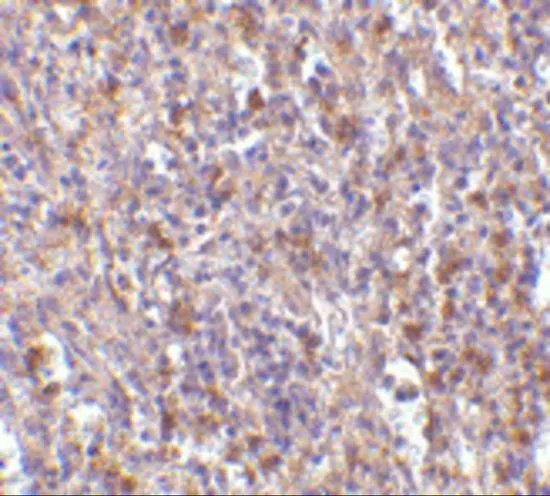
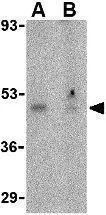
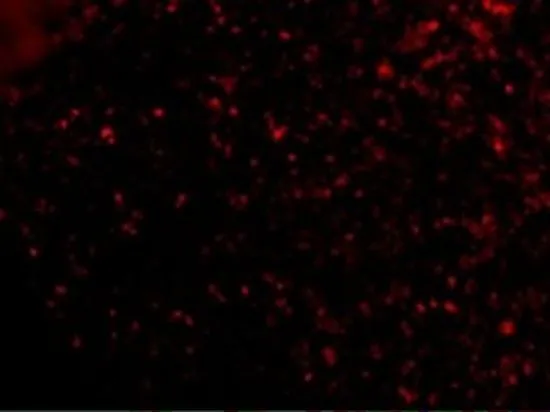
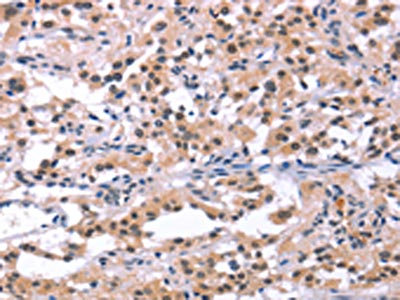
![WB analysis of human ovary tissue lysate using GTX17287 Orai1 antibody [3F6H5]. Working concentration : (A) 1 and (B) 2 microg/ml](https://www.genetex.com/upload/website/prouct_img/normal/GTX17287/GTX17287_2435_WB_20180221_w_23060620_440.webp)
![WB analysis of human spleen tissue lysate using GTX17289 Orai1 antibody [6D11A11]. Working concentration : (A) 1 and (B) 2 microg/ml](https://www.genetex.com/upload/website/prouct_img/normal/GTX17289/GTX17289_2436_WB_20180221_w_23060620_694.webp)
